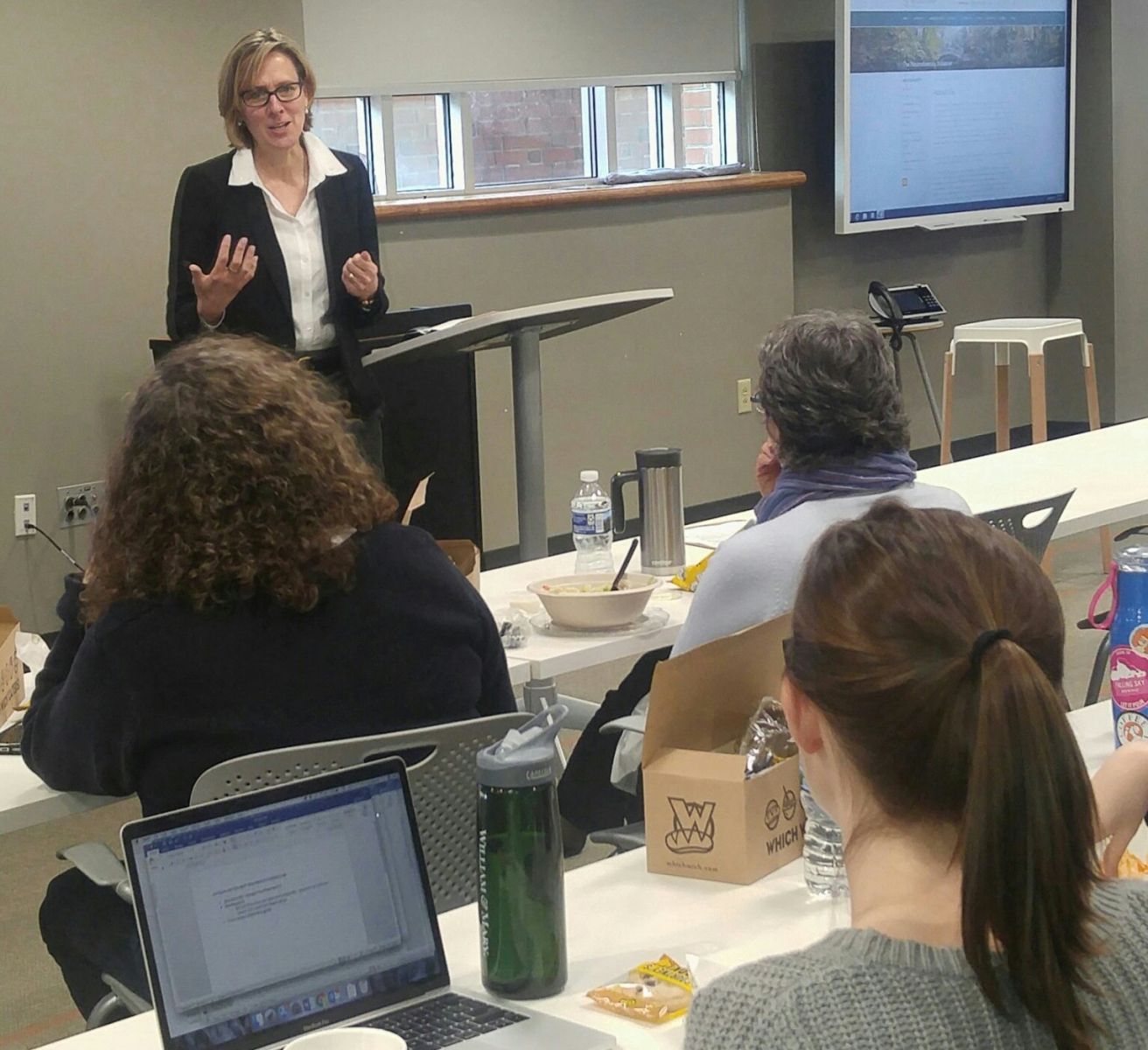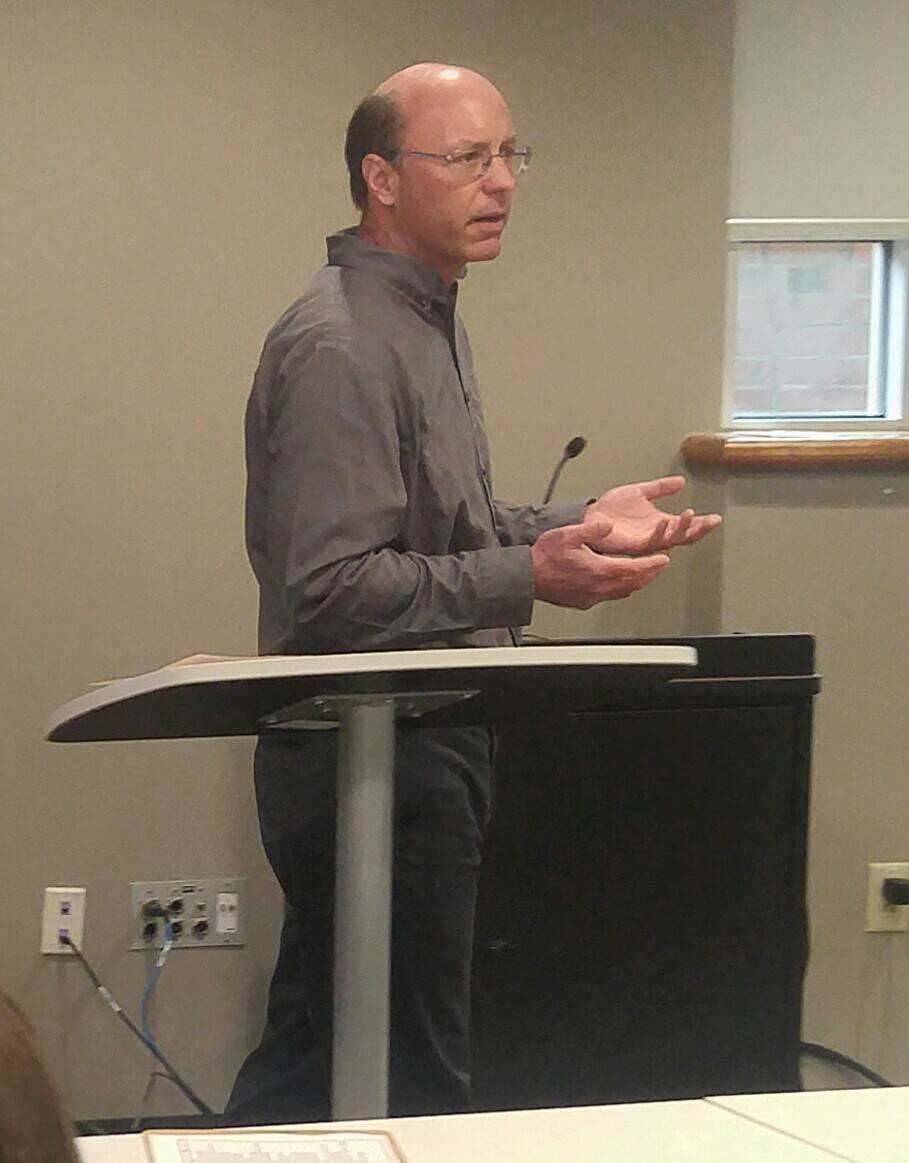By Jennifer Hoyt
William & Mary’s e-Learning Initiatives offered direction for educators as they communicate through digital learning environments by revisiting its theme of a universal design for learning (UDL). During the February workshop, e-Learning members shared the UDL framework with faculty and learning partners who search for new ways to customize their pedagogy, focusing on student engagement, academic values, learning spaces, and, of course, technology. Once the workshop ended, attendees were left with one common message: “Not all students are the same.”
Pablo Yáñez, who serves as the e-Learning Initiatives program manager, opened the noon meeting held in Swem Library’s Ford Classroom with the importance of accessibility and accommodations for all students at William & Mary. “Most often, this is something you do for a specific student,” noted Yáñez. “You are giving an accommodation, and it is a need that is most often addressed retroactively.” He encouraged educators to follow multiple paths of engagement, representation, action, and expression as they make their learning materials more readily available for student engagement.

co-chair, shares the project's mission
with educators and learning partners gathered in
Swem Library's Ford Classroom.
Co-chairs of William & Mary’s Neurodiversity Initiative contributed to the conversation as they presented their approach to teaching and learning within a UDL environment. Both Karin Wulf, director of W&M’s Omohundro Institute, and Josh Burk, chair of the W&M Department of Psychological Sciences, highlighted the workshop’s topic by sharing the institution’s mission to promote neurodiversity on campus. “This is a very William & Mary project,” Wulf stated. “It is all the strengths of William & Mary and some of the challenges as well.”
Moreover, Burk noted how project members continually rely on a large number of William & Mary supporters to develop the best ways to serve students who manage neurodiversity differences that range from autism to ADHD. Their strategy centers on asking what students experience at all levels of higher learning. “That can help us better understand some of the challenges that they may be bringing into the classroom,” said Burk.
Both co-chairs recognized the sensitivity surrounding the various methods that individuals process information, and they voiced their appreciation as academic departments encourage conversation on neurodiversity. “Every single one of us has a different brain,” explained Wulf. “Every one of us thinks differently. Every one of us processes differently.” By referring to those differences as neurodiversity, Wulf and Burk believe the language creates a positive platform for concerns and opinions within the field of higher education.

offers appreciation to faculty for supporting
the project.
“Talking to our colleagues who are already deeply engaged in questions of teaching and questions of accessible teaching, it is very powerful,” Wulf said. As Burk points out, William & Mary educators go beyond average expectations as they guide their students through each academic semester. “It would be very easy to say, ‘I just don’t want to deal with this,’ but that is not the attitude that our faculty take.”
As leaders of W&M’s e-Learning Initiatives look ahead to the next workshop on March 27, Wulf and Burk prepare for the neurodiversity group’s Summer 2019 Bridge Program. Taking suggestions from the UDL discussion, the co-chairs anticipate the program will provide an easier transition for students with neurodiversity differences once they join the William & Mary community. “Our diversity group serves as mentors for them while they’re here, and it just gets them off to a much better start,” Burk shared.

